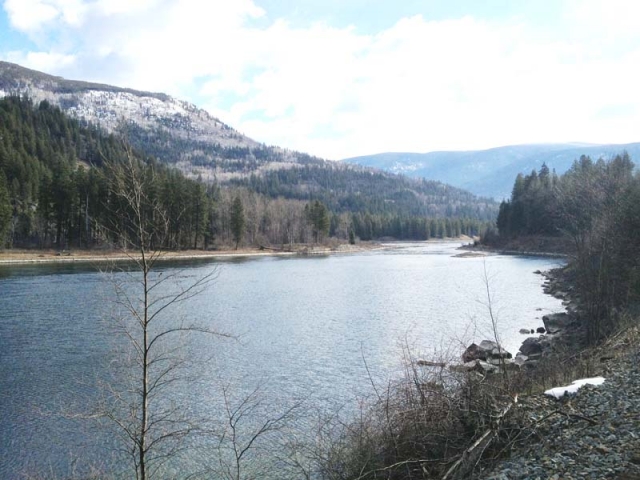BC Hydro seeks response to dredging Grohman Narrows
By Suzy Hamilton, The Nelson Daily
Snowpack, rainfall and runoff conditions in 2012 were so much above normal, that reservoirs and river levels reached critical levels.
“Kootenay Lake peaked at 1,753.8 feet, which is the highest level since 1974, “ said BC Hydro representative Mary Anne Coules.
As a result of the subsequent renewed concerns from local government and residents to expand Grohman Narrows, BC Hydro has called a public meeting for Monday, June 17 at the Prestige Inn from 6-8 p.m. to explore the idea.
The findings of hydraulic and geotechnical studies completed to date will be presented and a timeline set for the next steps.
Grohman Narrows, seen as a bottleneck from the West Arm of Kootenay Lake into the Kootenay River, has been dredged before.
According to information from BC Hydro, in 1890 Kootenay Company, Ltd removed 18,000 cubic yards of blasted rock, boulder and gravel from the riverbed.
In 1939, West Kootenay Power and Light removed over 330,000 cubic yards of gravel and nearly 18,000 yards of rock from the Narrows, the latter including material blasted from the bluffs on the south side of the river.
BC Hydro says that in addition to improving flood control, dredging the Narrows will “improve the operating flexibility for the Kootenay Lake system and provide power benefits to downstream generating stations on the Kootenay River. This project would also result in generation benefits and improved flood protection in the U.S.”
Seven representatives from BC Hydro, including those from its environmental and natural resources branch will attend the meeting.
“The first phase of the project, which is underway, and will run until October 2013, will look at the potential costs and benefits of the project and determine the feasibility of moving ahead with channel improvements at this time,” said Coules.
The information gathered will determine in the project will proceed to the next phase.
If it does, explorations would involve additional investigations and planning for the potential improvements, which could take up to two years before the actual work begins she said.
“It’s very important that we look at all potential issues and do a thorough evaluation before moving ahead,” said Coules.
Environmental issues will be addressed, she said. “As the project progresses we will be undertaking studies and assessments to understand the effects of this project on the environment, including fish and their habitat.”
BC Hydro forecasters said the Kootenay River basin run-off is near, or slightly above average in 2013, based on current snowpack conditions.
As a result, the chance of a repeat of BC Hydro’s 2012 flood management operations in 2013 is very unlikely, barring unforeseen extreme rainfall events.

























